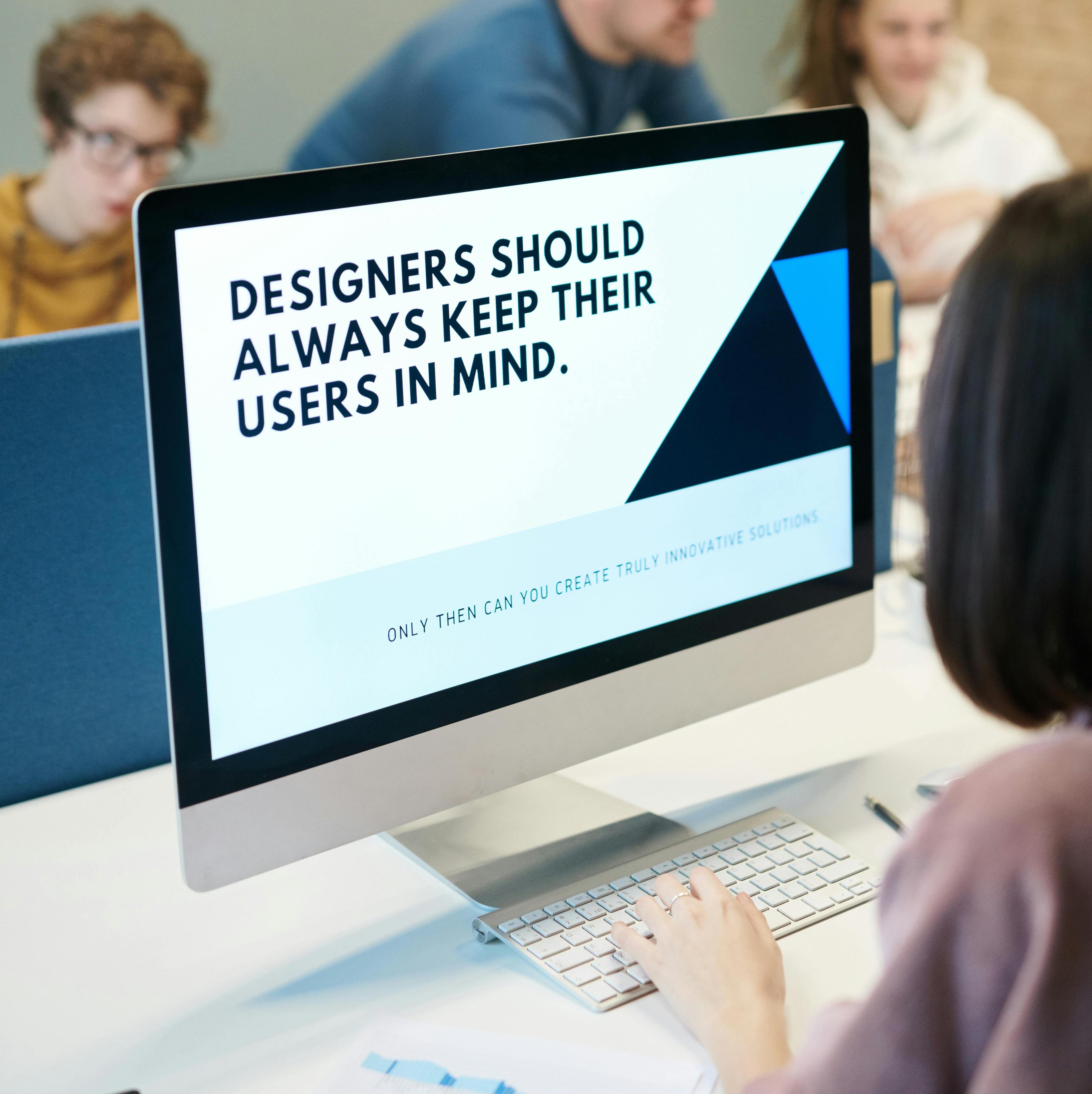Lesson 3, Part 1: Accessibility
Learning Objective
- Identify key accommodations for digital accessibility and explain their importance in creating inclusive content.

What is Accessibility?
Digital accessibility is crucial to ensuring that all individuals, including those with disabilities, can access and benefit from digital content. In general, accessibility is defined as the quality of being usable or available to everyone, regardless of their abilities or disabilities.
It encompasses a wide range of accommodations, such as those listed below.
Click on each accommodation below to learn more about the different accommodations.
Visibility accommodations are adjustments made to assist individuals with visual impairments in accessing visual information. Examples include providing screen readers for digital text and high enough contrast between the background and the text or images.
To learn more about how screen readers work, watch this video.
How does this apply to creating content on EdTechBooks?
- Add alt-text to images and infographics so that screen readers can describe the content of an image.
- Include infographics and images that follow best practices for contrast ratio and colorblind sensitivity.
Hearing accommodations are modifications designed to support individuals with hearing impairments in communication and information processing. Examples include providing captions or subtitles for videos and using real-time transcription services during virtual meetings.
Watch the following video that effectively illustrates what it is like for someone who is deaf to watch a video on YouTube without subtitles. NOTE: There is no audio in this video.
How does watching this video affect your desire to create accessible content?How does this apply to creating content on EdTechBooks?
- Add captions to all YouTube Videos
- Add a transcript of the video to your content (possibly as an appendix to your publication).
This chapter will delve into the most pertinent aspects of digital accessibility, offering practical insights to enhance your EdTech Book content. The following content has been adapted from the chapter "Digital Accessibility" in Web Design for Educators. For a comprehensive overview of accessibility, refer to that article.
What is Digital Accessibility
Digital accessibility is about ensuring that everyone, regardless of their abilities or disabilities, can interact with all digital resources. In relation to your EdTech Book publication, this means that you will want to make all text, videos, images, and infographics accessible to all users.
Web Content Accessibility Guidelines (WCAG)
Digital accessibility aims to make these resources usable for every individual. Central to this effort is the Web Content Accessibility Guidelines (WCAG), established by the World Wide Web Consortium (W3C), which indicate that content should be perceivable, operable, understandable, and robust. Read each drop-down section below to learn more about these four accessibility guidelines. For more detailed information, you can refer to the complete WCAG guidelines.
- Both the information and ux interface need to be available in ways that the user can access or perceive.
- This means a text description should be included for all infographics and images. Captions should be included on all videos.
- Users must be able to navigate your content using a keyboard.
- Content should also be easy to navigate.
- For example, headings are used to organize the content.
HIDDEN CONTENT
HIDDEN CONTENT
- The content is readable and understandable.
- The way you navigate the website is intuitive.
- The content is compatible with a variety of assistive technologies (e.g., screen readers).
- Content and interface elements must be designed so users can easily understand them.
- This includes providing text alternatives for non-text content and making content adaptable for various formats.
- Navigation and user interface elements must be functional and easy to use.
- This means that users must be able to navigate and interact with the content using various devices and input methods, such as keyboards and screen readers.
- The information and the navigation of the user interface must be easy to understand.
- This involves ensuring that text is readable and comprehensible, and that web pages operate in predictable ways.
Universal Design for Learning
Another key concept is Universal Design for Learning (UDL), which emphasizes that designs benefiting people with disabilities often improve learning for everyone. UDL encourages the inclusion of multiple means of representation and engagement in your content, enhancing accessibility and learning for all users.
Watch this video for more information on Universal Design for Learning
For ideas on different means of representation that you can include in your publication visit the "Overview of Possible Features" in Lesson 1.
Learning Check
Describe below one specific accommodation you could implement to improve digital accessibility in your own publication. How would this benefit all of your learners?
Digital Accessibility on EdTech Books
EdTech Books has many built-in features that allow content to be more accessible than on other similar platforms. Each publication on Edtech Books is automatically designed as being mobile-first, meaning that it can easily be accessed on all screen sizes (smartphones, tablets, and computers). This is important for many people, including those who can't afford a computer, as they are viewing publications on their mobile devices.
EdTech Books also makes it easy to add accessible features to your content, such as :
- Alt text to Images
- Text to Speech
There are many simple things that you can do to increase the accessibility of your publication. The next page has an accessibility checklist for your publication. Make sure to follow this checklist when creating your content.
Next - Lesson 3, Part 2: Accessibility Checklist
Now that you have completed Lesson 3, Part 1, move on to Lesson 3, Part 2: Accessibility Checklist.